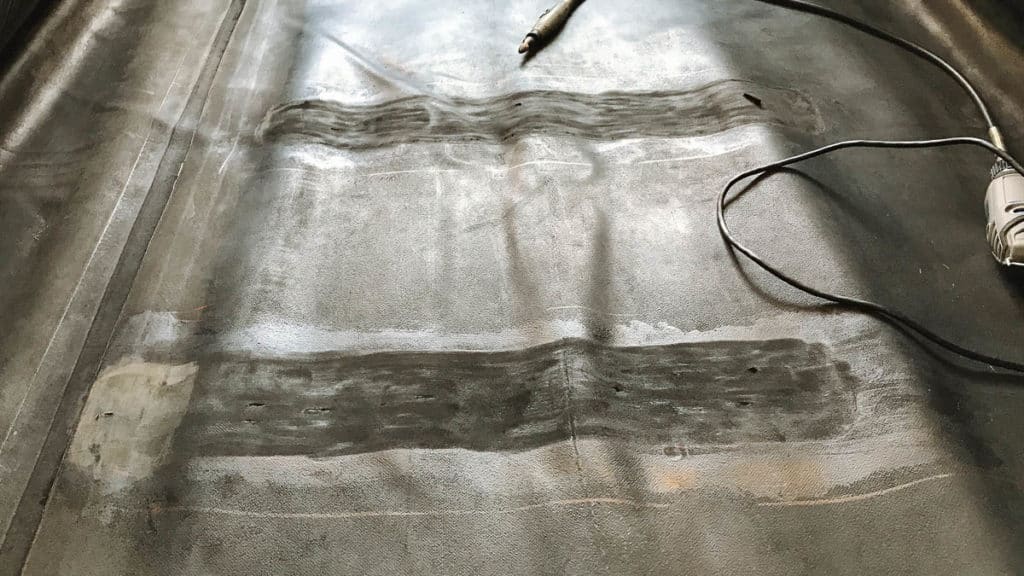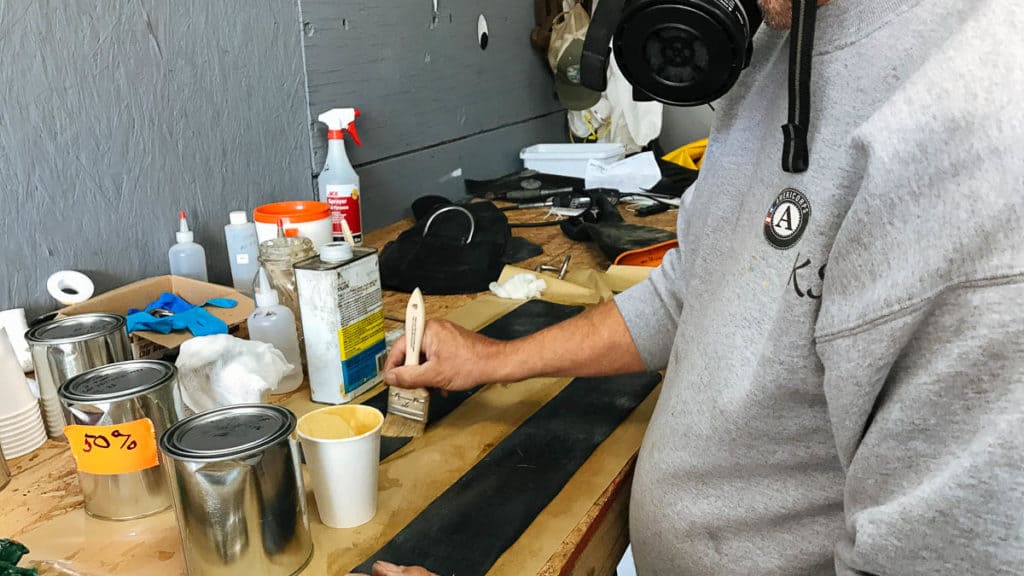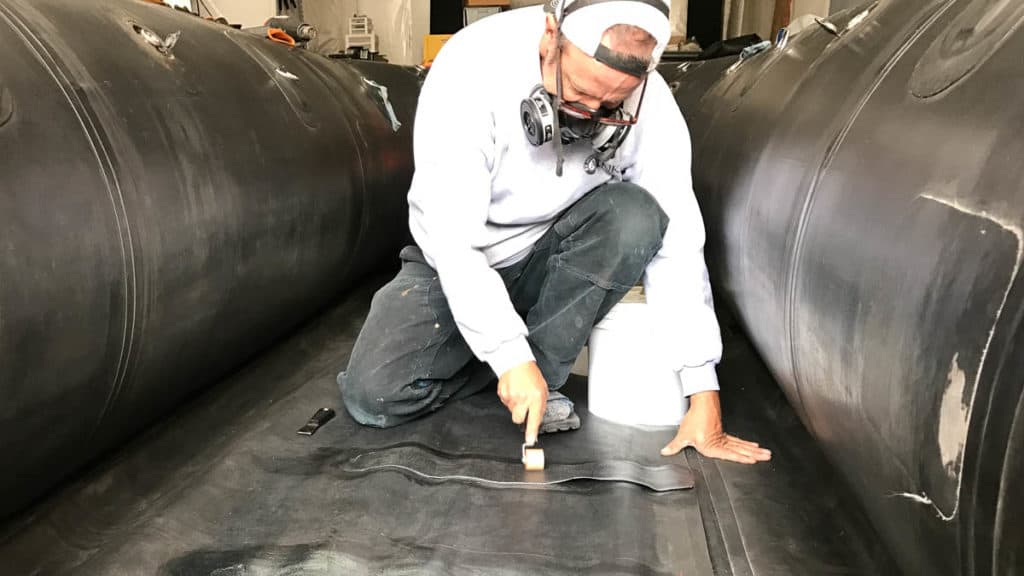Hypalon Inflatable Boat Repair
Make sure you know what type of material you are repairing, as there are different techniques for repairing different raft materials. This article is for repairing hypalon rafts.
What You Need
- Hypalon Patch Material
- Scissors
- Clifton Hypalon Glue or Shore Adhesive (don't use Stabond)
- Toluene
- Rag (to "dab" toluene)
- Glue Brush
- Pusher Tool (or something firm to push the air bubbles out with)
- Respirator and Heavy Duty Rubberized Gloves
Step-by-Step Guide
The first three steps are for preparing and assessing the appropriate size patch to affix to your boat. These are the same for Hypalon, PVC or Urethane.
1. Clean and dry the damaged area inside and out.
2. Measure the size of the damaged area to determine what size patch will be needed. The size of the hole or tear determines the method of repair needed.
- For small holes, repair tape or duct tape may work for a temporary fix.
- For larger holes 2-6 inches in size, an exterior patch alone should do the trick.
- For tears and holes 6 or more inches, an interior patch may be needed. Duct tape works great as a field interior patch. This will add structure and extra holding power to the repair.
3. Cut out the appropriate size patch material 2-3 inches larger than the damaged area in all directions. Use scissors to round out the corners of the patch.
4. Lightly go over the area to be patched with a raspier or sandpaper. Don’t be too aggressive or you can damage the material.

Lightly Sanded Raft Ready for Glue
5. Put on your respirator and rubberized gloves. You are about to handle some nasty chemicals.
6. Lightly dab the surface area with Toluene. Then with a brush, apply a thin coat of Clifton or Shore Adhesive to both the raft and the patch. Allow to dry for 30 minutes. Then reactivate the glue with a dab of Toluene again and then apply a second thin coat of shore adhesive and allow to dry for 15 minutes or until "tacky" to the touch.

Applying Glue to a Raft Patch
7. Now affix patch to boat by starting at the middle and applying pressure, working your way towards the outside, to remove any air bubbles. This technique is best done with a pusher tool.

Using the Pusher Tool to Remove Air Bubbles
8. If you're on the river, it’s best to set up camp and let the patch cure overnight. But if you have to get going, you can cover the patch with duct tape to keep it secure until you get off the river.
This article is based of directions from my friend Vic LeGall at Goodwater Boat Works.




